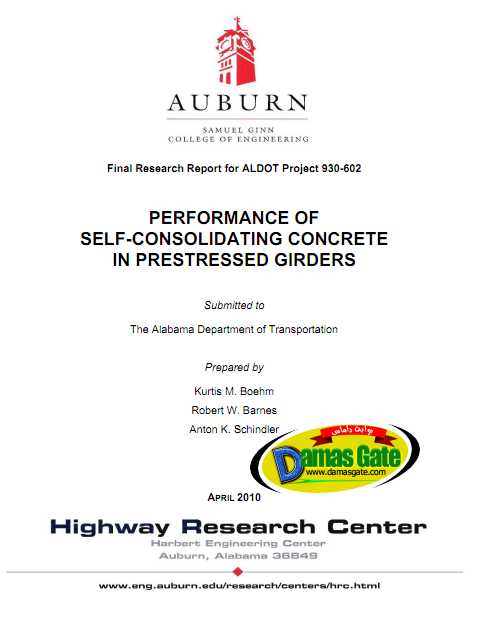Performance of Self Consolidatin Concrete in Prestressed Girders

INTRODUCTION
1.1 BACKGROUND The precast, prestressed industry contributes too many of the structures built today. Structures
such as highway bridges, parking decks, and flooring systems make up a vast majority of the structures built from precast, prestressed concrete elements. The ability of this industry to reliably mass-produce elements for these types of structures not only eases the construction process but also makes their products appealing to structural designers. For years the precast, prestressed industry has successfully utilized conventional-slump concrete to construct these structural elements. However, there is much room for improvement, specifically in the consolidation process of the fresh concrete. The successful use of self-consolidating concrete (SCC) in general precast members has generated interest in cost savings potential within the precast, prestressed concrete industry.
Conventional-slump concrete utilizes external/internal vibration procedures to obtain proper consolidation of fresh concrete. This process can be extremely time-consuming and also potentially hazardous, noisy, and tedious, all of which can result in increased costs. In spite of all the effort put forth into vibration, bug holes and voids are often still present on the surfaces of precast, prestressed elements once the forms are stripped. These results generate additional labor costs in order to patch the unsightly voids and to restore the intended cover to the tendons. SCC, as the name suggests, is designed to consolidate without vibration, thereby eliminating these negative aspects.
SCC was first developed in Japan in the early 1980’s by Hajime Okamura, a professor at Kocki University of Technology (Okamura and Ouchi 1999). It is a highly flowable concrete that is able to deform under its own weight, when wet, and completely encapsulate any reinforcement without exhibiting segregation or bleeding (Khayat 1999). The ability of SCC to flow around the reinforcement allows the concrete to be placed without the need for vibration. It is also significant to note that current research has shown that many SCC mixtures can be created by using supplementary cementing materials (SCM), which are industrial by-products such as fly ash and ground-granulated blast-furnace slag, as a partial replacement for cement in the concrete. This reduces some of the negative environmental impacts of producing cement, as well as offers a safe use for waste materials that would otherwise be land filled.
Download
*